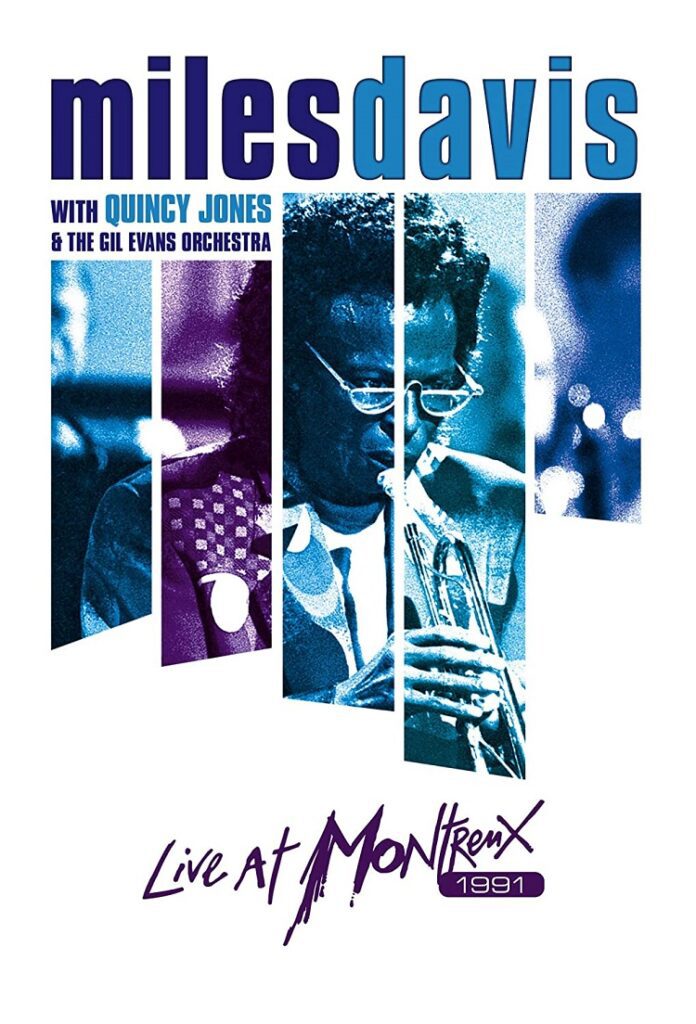
With a career that frequently found him spearheading new jazz genres over the course six decades, Miles Davis became one of the most important figures of the twentieth century, not just in jazz or music, but all the arts. He was a musician that constantly looked forward exploring new ideas because, as quoted in the liner notes, Miles felt that “if anybody wants to keep creating, they have to be about change.”
That’s why this concert, which found Miles looking back at his work with Gil Evans, was so special. The reason Miles agreed after initially turning it down isn’t made clear, but it likely had to do with how special he found the relationships with the men involved. Evans died in March 1988, and Miles dedicated his next two albums to him. Miles made frequent appearances at the Montreaux Jazz Festival, which was celebrating its 25th anniversary in 1991 and he had a friendship with co-founder Claude Nob. That year Quincy Jones became co-producer of the festival and “had long wanted to perform on stage” with his old friend. It was his idea to perform the Evans arrangements, which they did on July 8.
It may also had to do with Miles’ health, which was poor for the 65-year-old, and in less than three months he would be dead “on September 28, 1991 from the combined effects of a stroke, pneumonia, and respiratory failure.” As they rehearsed before the show, trumpeter Wallace Roney went from being Miles’ stand-in to sharing the load and being given solos to perform.
Jones brought together the Gil Evans Orchestra, which included Gil’s son Miles Evans (another sign of their mutual love and respect) on trumpet, and the George Gruntz Concert Jazz Band to create a 50-piece ensemble. After introductions by Nobs and Jones, where the latter says they are going back to the Birth of the Cool, they open with “Boplicity.” Regardless of his age, Miles muted trumpet sounds so distinct it is immediately recognizable.
As the video reveals, not only the fans but the other musicians too, when not playing, sit in rapt attention watching Miles play with a seeming effortlessness. Throughout the nearly hour-long performance, the camerawork shows tight close-ups, allowing the viewer to see Miles’ fingering the valves.
On “Maids of Cadiz,” which opens the Miles Ahead portion of the concert, Miles removes the mute and full sound of his horn can be heard. On Dave Brubeck’s “The Duke,” the band starts to swing. “Blues for Pablo” finds Roney doing a very fine job performing the solo and then they all get a brief break. Though a reputation for being stern and serious, Miles is playful with Roney. Waving his towel at Roney in an effort to cool him down.
Next up are selections from Porgy and Bess. The band is smokin’ right out of the gate with a song the credits list as Evans’ “Orgone,” but everywhere else I look, it’s referred to as “Gone.” Kennwood Dennard really shines with powerful play on the drums. At the end of “Summertime,” Miles acknowledges the crowd with a wave of his trumpet in response to their applause. “Here Come De Honey Man,” the final selection from Porgy and Bess, seems an odd choice because neither Miles nor Roney play much, but it serves as a very good showcase for alto sax Kenny Garrett.
The evening concludes with two numbers from Sketches from Spain, “The Pan Piper” and a 12-minute “Solea” that allows the ensemble to get into a groove. Spanish bassist Carlos Benavent is singled out with a mention from Jones.
The video is presented with a 1080i/MPEG-4 AVC encoded transfer displayed at an aspect ratio of 1.78:1. The picture delivers strong colors demonstrated in Miles’ amazing technicolor dreamcoat alone. Sharp details can be seen in the beads of sweat on the soloists’ brows and the wrinkles if Miles’ fingers. The bright lights cause video artifacts that trail off. The DTS-HD Master Audio 5.1 track offers great fidelity and a good dynamic range. The instruments come through with strong clarity and separation.
Extras include interviews with Claude Nobs (480i, 27 min), who talk about their friendship, Miles going electric and playing keyboard, and Quincy’s plan for Miles at this festival, a group of interviews (480i, 46 min) with the likes of Charlie Haden, Gil Goldstein (who played with Miles at this concert), Stanley Clarke, and Al DiMeola. Jean-Luc Ponty and Michel Petruccianni both speak French during their session, but no subtitles are provided.
Miles Davis with Quincy Jones & the Gil Evans Orchestra – Live at Montreux is a wonderful bit of jazz history for a number of reasons stated above and is highly recommended.